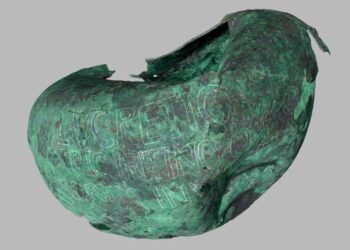New information on a mass burial found at the Bayanbulag site in Mongolia, which is thought to hold the remains of Han warriors who participated in the Han-Xiongnu War, has been revealed by a recent bioarchaeological study. The study, which was led by Jilin University in China, used a multidisciplinary approach that included genetic, isotopic, and osteological analyses to determine the origins and fate of these individuals. The discoveries provide a unique look into the lives of ordinary soldiers who lost their lives in the war and shed light on the Han Dynasty’s military strategies.

Over the course of more than a century in the early Iron Age, the Han Empire and the Xiongnu confederation engaged in a number of military conflicts known as the Han-Xiongnu War. The geopolitics of Eastern Eurasia were significantly shaped by these conflicts, which had an impact on migration patterns, cultural exchanges, and territorial control. However, the majority of historical records on these conflicts were written from the Han perspective, frequently highlighting strategic victories and political figures while ignoring the experiences of individual soldiers.
Despite being discovered in 1957, the Bayanbulag site was not extensively excavated until 2009, when a multinational team of archaeologists discovered signs of a fortified structure. The location was formerly a military outpost, as evidenced by artifacts , including Han-style ceramics, iron tools, military equipment, coins, and a clay stamp with a Han official’s mark on it. It might have been Shouxiangcheng, or the “Fortification for Receiving Surrender,” constructed by the Han Empire in 104 BCE, as recorded in historical accounts.
A mass burial with over 20 dismembered skeletons—some of which were in kneeling positions, indicating potential ritual executions or disciplinary punishment—was one of the site’s most startling finds. Decapitations and severed limbs were among the signs of severe trauma found in the initial osteological analysis, which suggested violent deaths. But until recent developments in biotechnology allowed scientists to extract and examine ancient DNA and isotopic signatures, the identity of these individuals remained a mystery.

In a study that was published in the Journal of Archaeological Science, 14 tooth samples from the burial were analyzed by researchers to determine the individuals’ genetic and geographic origins. All of the individuals were proven to be male by genome-wide sequencing, and 11 of them showed substantial genetic links to ancient and modern Han Chinese populations from North China. The Y-chromosome haplogroups O2a2b1a1a-F8, O2a2b1a2-F114, and Q1a1a1a-M120 were directly associated with populations from the Yellow River Basin.
Analysis of strontium isotopes provided more evidence that these individuals were not native to Mongolia. They had been born and raised in Han-controlled areas, as evidenced by their isotopic signatures , which closely matched those of North China, particularly the Ordos Plateau and the Central Plains. Additional evidence came from stable carbon isotope analysis, which revealed a diet rich in millet and wheat—staple crops of agricultural societies in North China—in sharp contrast to the meat- and dairy-based diet of the nomadic Xiongnu.
The results imply that rather than being a permanently occupied settlement, the Bayanbulag site served as a Han military fortress. In order to protect frontier outposts from Xiongnu assaults, the soldiers stationed there were probably conscripted farmers from rural northern areas of the Han Empire. The precise circumstances of their deaths remain unclear. They might have been executed as captives, died in battle against Xiongnu forces, or even been punished by their own commanders.






















